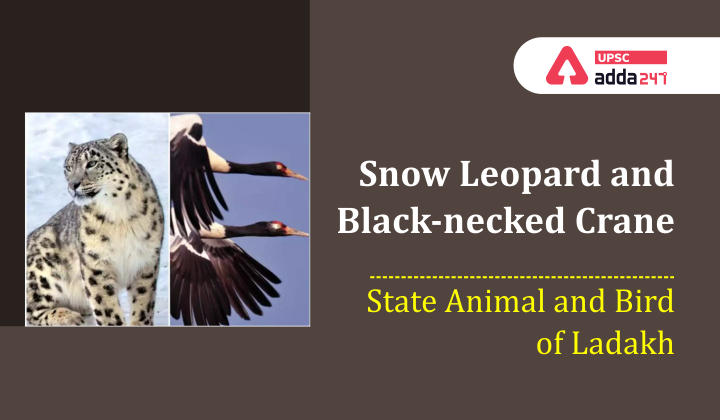Table of Contents
State Animal and State Bird of Ladakh: Relevance for UPSC Exam
- GS Paper 3: Environment: Conservation, environmental pollution, and degradation.

Get free video for UPSC CSE preparation and make your dream of becoming an IAS/IPS/IRS a reality
State Animal and State Bird of Ladakh- Context
- Recently, the Union Territory (UT) of Ladakh adopted two endangered species, snow leopard and black-necked crane, as State Animal and State bird of Ladakh.
- The black-necked crane, only found in the Ladakh region, was the State bird of J&K before August 5, 2019 (foundation day of UT of Ladakh).
Kaziranga National Park
Snow Leopard
- About: Snow leopards are the top predator in the food web and act as an indicator of the health of the mountain ecosystem.
- Scientific Name: Panthera uncia
- Habitat of Snow leopard:
- In India: inhabits the higher Himalayan and trans-Himalayan landscape in the five states of Jammu and Kashmir, Himachal Pradesh, Uttarakhand, Sikkim, and Arunachal Pradesh.
- Hemis, Ladakh is known as the Snow Leopard capital of the world.
- In the World: Mountainous regions of central and southern Asia.
- In India: inhabits the higher Himalayan and trans-Himalayan landscape in the five states of Jammu and Kashmir, Himachal Pradesh, Uttarakhand, Sikkim, and Arunachal Pradesh.
- Protection Status: It is included in-
- ‘Vulnerable’ on the IUCN-World Conservation Union’s Red List of the Threatened Species.
- ‘Appendix I’ of the Convention on International Trade of Endangered Species (CITES).
- ‘Schedule I’ of the Indian Wildlife (Protection) Act 1972.
- The Convention on Migratory Species (CMS),
Dibru Saikhowa National Park
Black-necked Crane
- About: Black-necked Cranes are medium-sized alpine cranes, weighing about 5 kg each and standing about 115 cm tall.
- The upper long neck, head, primary and secondary flight feathers and tail are completely black and a conspicuous red crown adorns the head.
- Both the sexes of Black Necked Crane are almost of the same size, but the male is slightly bigger than the female.
- The juveniles have a brownish head and neck and plumage is slightly paler than that of an adult.
- Scientific name: Grus nigricollis
- Habitat of the bird:
- Breeding Ground: The high-altitude wetlands of the Tibetan plateau, Sichuan (China), and eastern Ladakh (India) are the main breeding ground of the species.
- The birds spend winter at lower altitudes
- In Ladakh, Black-necked cranes are only found in Changthang region.
- In Bhutan and Arunachal Pradesh, it only comes during the winters. In Arunachal Pradesh, it is often sighted in-
- Sangti Valley in West Kameng district,
- Chug valleys and Zemithang provinces in the Tawang district.
- Breeding Ground: The high-altitude wetlands of the Tibetan plateau, Sichuan (China), and eastern Ladakh (India) are the main breeding ground of the species.
- Protection Status:
- IUCN Red List: Near Threatened
- CITES: Appendix I
- Indian Wildlife (Protection) Act, 1972: Schedule I
Deepor Beel Wetland and Wildlife Sanctuary



 TSPSC Group 1 Question Paper 2024, Downl...
TSPSC Group 1 Question Paper 2024, Downl...
 TSPSC Group 1 Answer key 2024 Out, Downl...
TSPSC Group 1 Answer key 2024 Out, Downl...
 UPSC Prelims 2024 Question Paper, Downlo...
UPSC Prelims 2024 Question Paper, Downlo...
